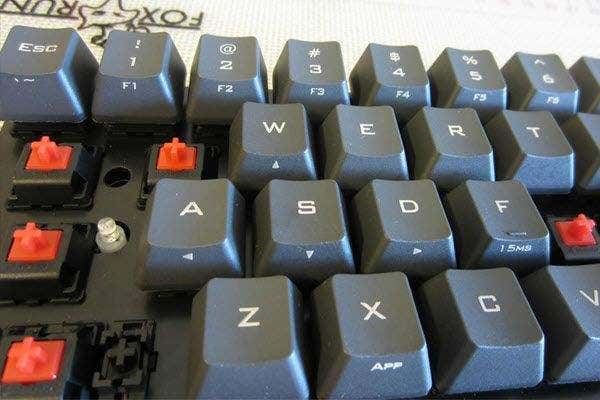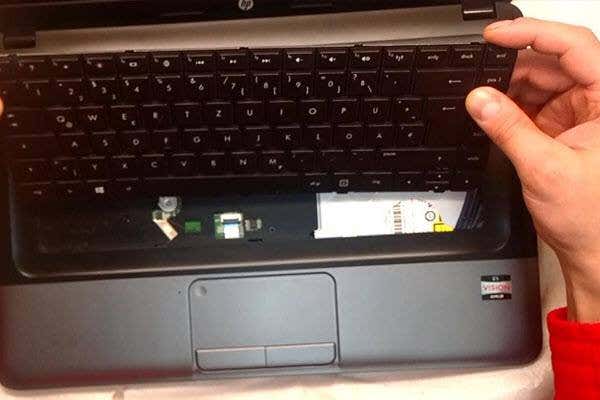It’s common knowledge that water and electronics do not mix well. In many cases, water can completely fry electronic equipment and stop it from working entirely. Thankfully, for keyboards, it’s very possible to fix them by removing the moisture. It’s also possible, although more difficult, to repair a laptop keyboard after it has been water damaged.
How to Fix a Water Damaged Keyboard for Desktop PCs
Fixing a water damaged keyboard is usually quite easy so long as you take the necessary steps and you are cautious during the repair. The first step is to unplug your keyboard from your PC so that power no longer gets to it. On most keyboards, especially cheaper membrane ones, a little water won’t necessarily harm your keyboard at all. For more complicated mechanical and gaming keyboards that often have extra circuitry, there’s the potential for long-lasting damage, and the repair process is a little more complex, but the general concept is the same. For this guide, we’ll be using a standard office membrane keyboard as an example. You can follow the same steps with your own keyboard, but if you get stuck somewhere along the way, you may need to look up a step by step disassembly guide online for your specific keyboard.
The overall goal is to disassemble the keyboard piece by piece so that we can remove any moisture. To start, take a picture of your keyboard – you’ll need this for reference later. Next, start by pulling out all of the keys. Almost every keyboard has keys that can pop in and out without causing any damage. You may need a small lever to pull the keys out. Consider using a screwdriver or penny. Make sure to put the keys somewhere safe so that they do not get lost. With all of the keys out, the next step is to move onto the back. Flip over your keyboard and remove the screws one by one. Eventually, you’ll be able to remove the top layer of the keyboard to get to the underlying layer. If this is a membrane keyboard, you’ll find one or two thin membrane layers that cover the entirety of the keyboard.
The next goal is to remove the membrane layers – they should just slide out. Sometimes there will also be a metal frame that can also be unscrewed or pulled out. After that, all of your components will be separated. Your next goal will be to carefully wipe down all components with a dry towel. You need to ensure all moisture is soaked up. If you have spilled juice or soda and your keyboard is now sticky, you may need to buy some alcohol swabs to wipe off the residue. Once all of the moisture has been removed, you can re-assemble the keyboard. Simply follow the steps you took to disassemble the keyboard, but in reverse. It’s also a good idea to leave the keyboard disassembled for 12 to 24 hours so that any hidden moisture can evaporate off. Refer to the original photo you took for placing the keys back in their original position. In almost all cases, this will fix your desktop keyboard. Keep in mind that more complex keyboards with LEDs or extra functionality may require more disassembly and there is also the chance that your keyboard may be broken beyond repair. In this case, you should contact the manufacturer to see if they offer repairs or replacements.
How to Fix a Water Damaged Laptop Keyboard
Fixing a laptop keyboard is more difficult because there’s the chance the moisture could get in contact with other important circuitry in the laptop and cause further damage. The first step is to power off your laptop and remove the battery immediately. Next, hold the power button down to ensure there is no remaining charge in the laptop components. The sooner you power down your laptop, the less chance there will be for damage. The next step will be for you to disassemble your laptop and wipe it down. The disassembly process will depend on the laptop model you own. Thankfully, there are disassembly guides for virtually every laptop model on the planet (search on YouTube) and most laptops are built specifically for easy disassembly.
Some laptops are harder to disassemble than others, however. For some, you’ll get by on just a screwdriver. For others, you may need specific tools that are usually found in laptop repair kits. Another great online resource for DIY repairs is iFixit. They have an entire section on repairing various types of keyboards with step by step instructions, screenshots and sometimes even videos.
The end goal once again is to remove all moisture from inside the laptop. This process can be lengthy and will require patience and caution, but with the right guide, you should be fine. If your laptop worked before you shut it down for the repair process, chances are it’ll work again once you clean up all of the moisture.
Summary
In summary, if your keyboard still works after water damage, but acts erratically, usually cleaning the keyboard and removing moisture will fix it and return usage back to normal. However, if the laptop or desktop keyboard stops functioning entirely, there’s a chance that it may be broken beyond repair. Either way, the only method for a potential fix is to carefully disassemble the desktop keyboard or laptop and remove all moisture. Did this guide help? Let us know your thoughts. If you have any queries, please don’t hesitate to ask us for advice.





